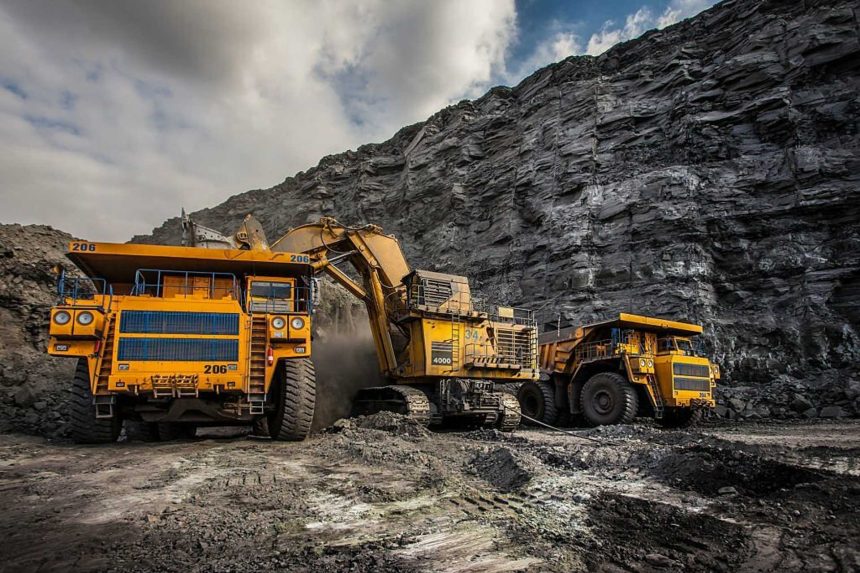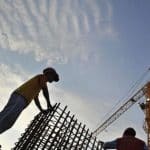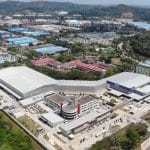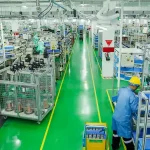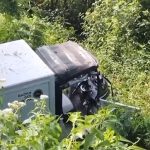Heavy equipment is a vital asset in construction, mining, and infrastructure projects. Despite the efficiency and productivity it offers, there are significant operational risks. Accidents, damage, and even loss of heavy equipment can occur at any time, even on well-managed projects.
As an industrialist, understanding the operational risks of heavy equipment is the first step in protecting investments, maintaining workplace safety, and ensuring project continuity. This article will outline the types of risks that arise in various fields of work, as well as how risk management and insurance can provide effective protection for companies.
- Risks in Construction Projects
In the construction sector, heavy equipment such as excavators, bulldozers, cranes, and concrete pumps operate in high-activity and high-risk environments.
Some of the main risks include:
- Accidents at project sites are caused by human error or miscommunication between operators and workers.
- Mechanical damage due to heavy terrain conditions, excessive loads, or inadequate maintenance.
- Heavy equipment collapse (crane collapse, excavator overturn) can cause major losses and the risk of fatal injuries.
- Damage due to contact with underground installations or electrical cables.
In addition to material losses, accidents on construction projects can also result in legal liability for third parties. Therefore, Contractor’s Plant and Machinery (CPM) and Public Liability Insurance are a crucial combination for protecting companies.
Risks in the Mining Sector
Mining operations require heavy equipment to work for long periods in extreme terrain—dusty, muddy, steep, and remote. Dump trucks, wheel loaders, graders, and dozers operate under stressful conditions.
Specific risks in the mining sector include:
- Accidents on mining roads, such as overturns or collisions between units.
- Overheating and engine failure due to continuous workload.
- Fires caused by fuel leaks or electrical systems.
- Damage due to landslides, floods, or mine explosions.
Especially in open-pit mining areas, the risk of total loss can be very high if equipment is buried or submerged. In many cases, claimsheavy equipment insurancein mining is one of the most complex, as it requires thorough investigation and complete technical documentation.
Risks in Infrastructure and Highway Projects
In toll road, bridge or dam construction projects, heavy equipment must work in open areas with high traffic.
Some risks that often arise:
- Damage due to collision with public transportation.
- Losses due to theft or vandalism, especially on projects in vulnerable areas.
- Equipment damage due to unstable ground conditions or narrow work areas.
- The risk of extreme weather such as floods or lightning can damage the electronic systems of modern heavy equipment.
Furthermore, project delays due to equipment failure can also lead to indirect financial losses, such as liquidated damages. Therefore, a combination of Property All Risks (PAR) and Business Interruption (BI) insurance is highly recommended for large contractors.
Risks in Logging and Plantation Operations
In the forestry and plantation sector, heavy equipment such as excavators, log loaders, and truck trailers face extreme working conditions in remote areas.
Common operational risks include:
- Damage when crossing a wooden bridge or slippery dirt road.
- Fire caused by friction between the engine and dry branches or spilled diesel fuel.
- Loss of equipment due to theft in a remote, unattended area.
- Damage during relocation between plantation blocks (internal mobilization).
In cases like this, companies often forget to extend insurance coverage to non-productive (off-site) areas. Yet, risks often arise outside the primary work area.
Main Factors Causing Accidents
After analyzing hundreds of claims, the main causes of heavy equipment accidents can be grouped into:
- Human error (more than 60%) – operators are tired, unlicensed, or neglect safety procedures.
- Lack of regular maintenance, leading to failure of the hydraulic system, brakes, or engine.
- Extreme environmental conditions, including adverse weather, unstable soil, and steep terrain.
- Lack of training and job supervision.
Effective risk management requires a combination of operator training, equipment inspections, disciplined safety procedures, and financial protection through insurance.
The Importance of an Authorized Insurance Broker in Risk Management
Managing heavy equipment insurance isn’t just about purchasing a policy. It requires technical understanding and field risk analysis to ensure all potential losses are properly covered.
A licensed insurance broker acts as an independent advisor to the company—analyzing needs, preparing documents, negotiating the best premiums and clauses, and assisting when claims arise.
Many companies process insurance directly with the insurance company without understanding the details of the contract. As a result, when a large claim arises, exclusion clauses are often discovered that lead to the claim being denied. With the support of a broker, this risk can be avoided because all wording and provisions are designed with real-world conditions in mind.
Efficient Claims Resolution
In the world of heavy equipment, claims aren’t just about the amount, but also about the speed and fairness of settlement. Projects can be halted if equipment is severely damaged and the claims process drags on.
An experienced broker will help:
- Make a quick report to the insurance company.
- Arrange field investigations with independent surveyors.
- Prepare supporting documents and official communications.
- Negotiate the assessment results to match the actual loss value.
This professional approach has been proven to speed up the claims process and maintain good relations between the equipment owner, insurance, and contractor.
Case Study: Claims of Success in the Field
In various large mining and infrastructure projects in Indonesia, many companies have experienced high-value heavy equipment damage. For example, an excavator accident that rolled into a mud pool resulted in a claim amounting to over $1 million.
With the support of an experienced insurance broker, the claim was resolved without dispute, and reimbursement was received quickly. Cases like this demonstrate the importance of professional support in heavy equipment risk management systems.
Conclusion: Planned Operational Protection
Each sector has different risk characteristics, but one principle remains the same—heavy equipment is a high-value asset that requires comprehensive protection.
By implementing comprehensive risk management, operator training, and insurance through authorized brokers, companies can maintain project continuity and avoid major losses that could threaten business continuity.
As an experienced broker, L&G Insurance Broker has helped many companies in Indonesia protect more than 2,000 units of heavy equipment from leading brands such as SANY, XCMG, LiuGong, SDLG, Weichai, Zoomlion, and Lovol. With experience handling hundreds of large claims in the mining, construction, and energy sectors, L&G is ready to be a strategic partner for companies looking to ensure every piece of heavy equipment operates safely, efficiently, and is fully protected.
—
DON’T WASTE YOUR TIME AND SECURE YOUR FINANCIAL AND BUSINESS WITH THE RIGHT INSURANCE.
HOTLINE L&G 24 JAM: 0811-8507-773(CALL – WHATSAPP – SMS)
Website: lngrisk.co.id
Email: halo@lngrisk.co.id
—


